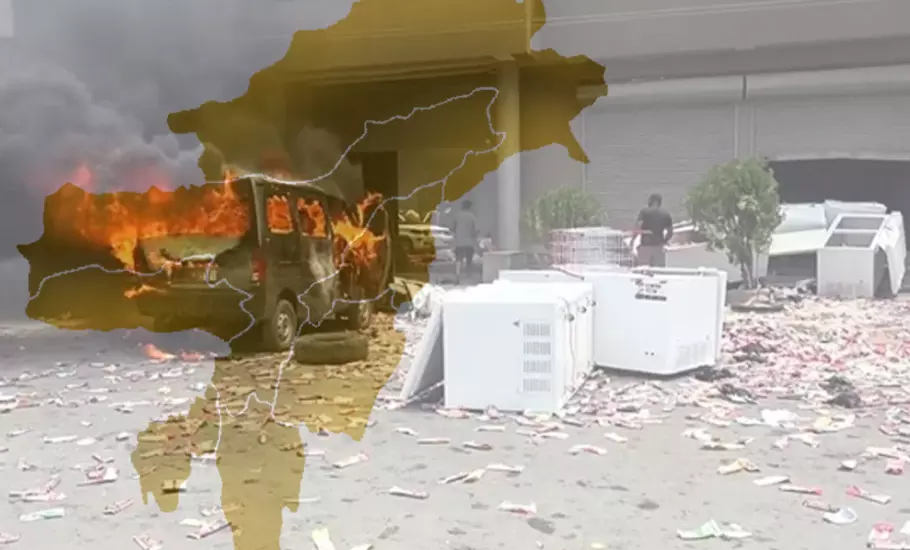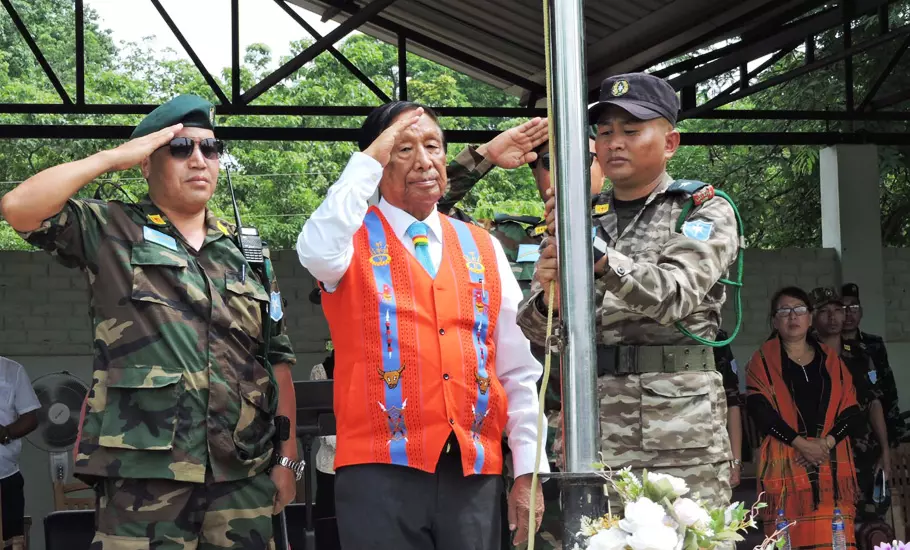
- Home
- India
- World
- Premium
- THE FEDERAL SPECIAL
- Analysis
- States
- Perspective
- Videos
- Sports
- Education
- Entertainment
- Elections
- Features
- Health
- Business
- Series
- In memoriam: Sheikh Mujibur Rahman
- Bishnoi's Men
- NEET TANGLE
- Economy Series
- Earth Day
- Kashmir’s Frozen Turbulence
- India@75
- The legend of Ramjanmabhoomi
- Liberalisation@30
- How to tame a dragon
- Celebrating biodiversity
- Farm Matters
- 50 days of solitude
- Bringing Migrants Home
- Budget 2020
- Jharkhand Votes
- The Federal Investigates
- The Federal Impact
- Vanishing Sand
- Gandhi @ 150
- Andhra Today
- Field report
- Operation Gulmarg
- Pandemic @1 Mn in India
- The Federal Year-End
- The Zero Year
- Science
- Brand studio
- Newsletter
- Elections 2024
- Events
- Home
- IndiaIndia
- World
- Analysis
- StatesStates
- PerspectivePerspective
- VideosVideos
- Sports
- Education
- Entertainment
- ElectionsElections
- Features
- Health
- BusinessBusiness
- Premium
- Loading...
Premium - Events

“Like you Indians, we Nagas also have an Independence Day, and it comes a day before yours,” Thinoselie Medom Keyho had told this reporter when the two first met in 1982.Thinoselie had led the first batch of Naga rebels to China for training and procuring weapons in 1966. After the 1962 Indo-China war, Beijing had started backing Northeastern insurgencies to destabilise India. The...
“Like you Indians, we Nagas also have an Independence Day, and it comes a day before yours,” Thinoselie Medom Keyho had told this reporter when the two first met in 1982.
Thinoselie had led the first batch of Naga rebels to China for training and procuring weapons in 1966. After the 1962 Indo-China war, Beijing had started backing Northeastern insurgencies to destabilise India. The fissures that existed in the Northeast appeared easy prey to the Dragon country.
The reporter’s maternal uncle, an Indian Air Force (IAF) flight signaller, was Thinoselie’s prisoner for eight months after an IAF aircraft was shot down near Meluri in Nagaland. The two ended up becoming great friends.
Thinoselie was arrested by the Indian army in East Pakistan from a Dhaka hotel a day before the Pakistani forces surrendered to Indian troops in December 1971 and is now "retired from national work".

Ethnic conflicts have disrupted peace in the region for decades.
In 1982, when this reporter first met Thinoselie, with his uncle’s reference, he was trying to bring together all Naga rebel factions to avoid fratricidal strife under the newly formed Naga National Workers Conference, a short-lived platform that evaporated in the brutal factional fighting of the Naga rebel groups in the 1980s-1990s.
While August 14 is known to all as Pakistan’s independence day, only few know that on the same day in 1947, the Naga National Council led by Angami Zapu Phizo declared independence for the Naga Hills, then part of colonial province of Assam. What followed was a decade of bitter negotiations and finally a military crackdown by the Indian state. The Naga insurgency soon drew effective support in the form of weapons supply and military training, first from Pakistan — from its then eastern wing — and then from China after the 1962 Himalayan war. It is easily the mother of all Northeastern insurgencies which are rooted in deep ethnic passions nurtured by a sense of otherness because the Northeast was never part of any pre-British empire based in the Indian mainland.
Since 1997, the National Socialist Council of Nagaland’s (NSCN) dominant faction led by Thuingaleng Muivah, has been on the table but its negotiations with India has hit a major roadblock over NSCN’s demand for a separate flag and separate Constitution for Nagaland.
Though the 2015 Framework Agreement for resolving the Naga imbroglio alluded to the concept of "shared sovereignty" and led to NSCN’s pitch for a separate flag and Constitution, BJP’s subsequent anti-autonomist posture — evident in abrogation of Article 370 in Kashmir — has complicated matters in resolving not only the Naga but other similar issues in Northeast.

“Tribal autonomy is not a bad thing but the BJP seems opposed to it and so it cannot find a solution in Manipur,” says former BJP MP Kim Gangte, a senior Kuki leader. “Since the Kukis have not only been denied autonomy to run the affairs of their areas in Manipur but also face vicious state oppression unleashed by the Biren Singh government, most Kukis see no future in Manipur and demand a separate administration.”
At the root of the festering conflict in Northeast lies the top-down state-driven nation-building agenda of the post-colonial Indian state which has looked at Northeast as a different India that has to be mainstreamed.
“The idea of national mainstreaming is autocratic and imposed from top, like the Mughal or British rule. Plurality and duality of identity is a fact of Indian life, we are a civilisational and not a nation-state like France or Germany. India has no mainstream, it is a land of many streams and as Tagore said it is the ocean of pilgrimage to humanity,” says political scientist and author Ranabir Sammadar, whose has penned the masterpiece A Biography of the Indian Nation.
Recognition of diversity and unity in diversity should logically lead to acceptance of autonomy where smaller nationalities should be allowed self-governance on the basis of their own customs and traditions. “Autonomy for tribals under Sixth Schedule of Indian Constitution helped Tripura’s Left government address the tribal insurgency and now it is because the autonomous council addressed the tribal aspirations of self-rule, demands for separate tribal Tipraland has not found any traction. Autonomy turns tribals into stakeholders in an existing state rather than boost demands for separation,” says Beni Madhab Majumder, author on Tripura politics.
The “durable disorder” syndrome that Assam’s top political scientist Sanjib Baruah associates with India’s Northeast in his book Durable Disorder: Understanding the Politics of Northeast India, is not only due to the resentment of smaller nationalities being uncomfortable with the imposed mainstream model — further aggravated now by the Hindu, Hindi, Hindustan format of the saffron brigade — and the majoritarian state model centring around a dominant community — Assamese in Assam or Meiteis in Manipur — but also because of the enormous ethnic diversity that leads to multiple separate homeland demands that often conflict with each other, leading to bloody mayhem like the Naga-Kuki clashes in 1990s.
The Congress governments in the past have addressed the conflicts in Northeast by allowing creation of tribal-dominant states by breaking up the huge colonial province of Assam or by creating autonomous councils within smaller states. The BJP’s stiff muscular nationalism hinders such flexible responses and so obfuscates possible roadmaps for conflict resolution.
“Except resolving the Bodo imbroglio by creation of the Territorial Council in western Assam, the BJP has fought shy of autonomy-driven solutions partly because it does not seek to upset the majority communities like Assamese or Meiteis, who are largely Hindus, and partly because it lacks expert negotiators like G Parthasarathy, who negotiated the 1986 Mizo settlement, and Rajesh Pilot, who was the architect of 1993 Bodo Accord and who opened the dialogue with the NSCN, to handle crucial political negotiations like that with the NSCN.
During the recent Meitei-Kuki conflagration in Manipur, three dangerous trends have surfaced — (a) the police and state administration with political backing from the top have been engulfed by the ethnic passions to the extent that 4,000 weapons from police armouries have been handed over to troublemakers who have then made a public display of tearing up the chief minister’s resignation letter; (b) despite promulgation of Article 355, the Centre has failed to effectively intervene and not even created the Unified Command to allow the military commanders to function effectively; (c) no attempt to start a political inter-ethnic dialogue has been made.
Meanwhile, Kukis have been demonised as poppy cultivators whereas there is neither any action nor any spotlight on drug cartels like the Itocha which enjoy high-level political patronage evident in the fate of former Manipur police officer Thounaojam Brinda, who was famous as Lady Singham.
“In some ways, it is a rerun of Gujarat 2002, marked by unbelievable administrative inertia under political directions to promote a violent majoritarian agenda,” says Congress leader Bobbeeta Sarmah. But then she asks a valid question: “Can we afford this in a sensitive border state like Manipur which borders on Myanmar that has descended into civil war?”
While the answer to Sarmah’s question is a clear no, the reality is that the downslide is here to stay, if one were to go by the way the Manipur crisis has been handled by the BJP ‘double engine’ government.
“Every major riot in Northeast, like the 1980 Tripura riots, the 1983 Assam riots or the 1996 Bodoland riots were controlled within a month but this crisis in Manipur has gone on three months and does not show any signs of abetting,” says security analyst Benu Ghosh, a former Intelligence Bureau officer with long experience in Northeast. “The state administration looks like a cage of headless chickens with none to control the flutter,” he says.
But while the Congress dismissed its own RK Dorendra Singh-led government in Manipur for failing to control the Naga-Kuki conflagration in the 1990s and while the BJP has been quick to discuss the J&K government and impose President’s Rule, Manipur is a case in contrast.
“Biren Singh has been allowed to stay despite obvious failure of governance,” says Benu Ghosh. To reverse the trend, experts say, the Centre has to prioritise resolution of long festering conflicts in the Northeast before the civil war scene in Myanmar engulfs the region.

